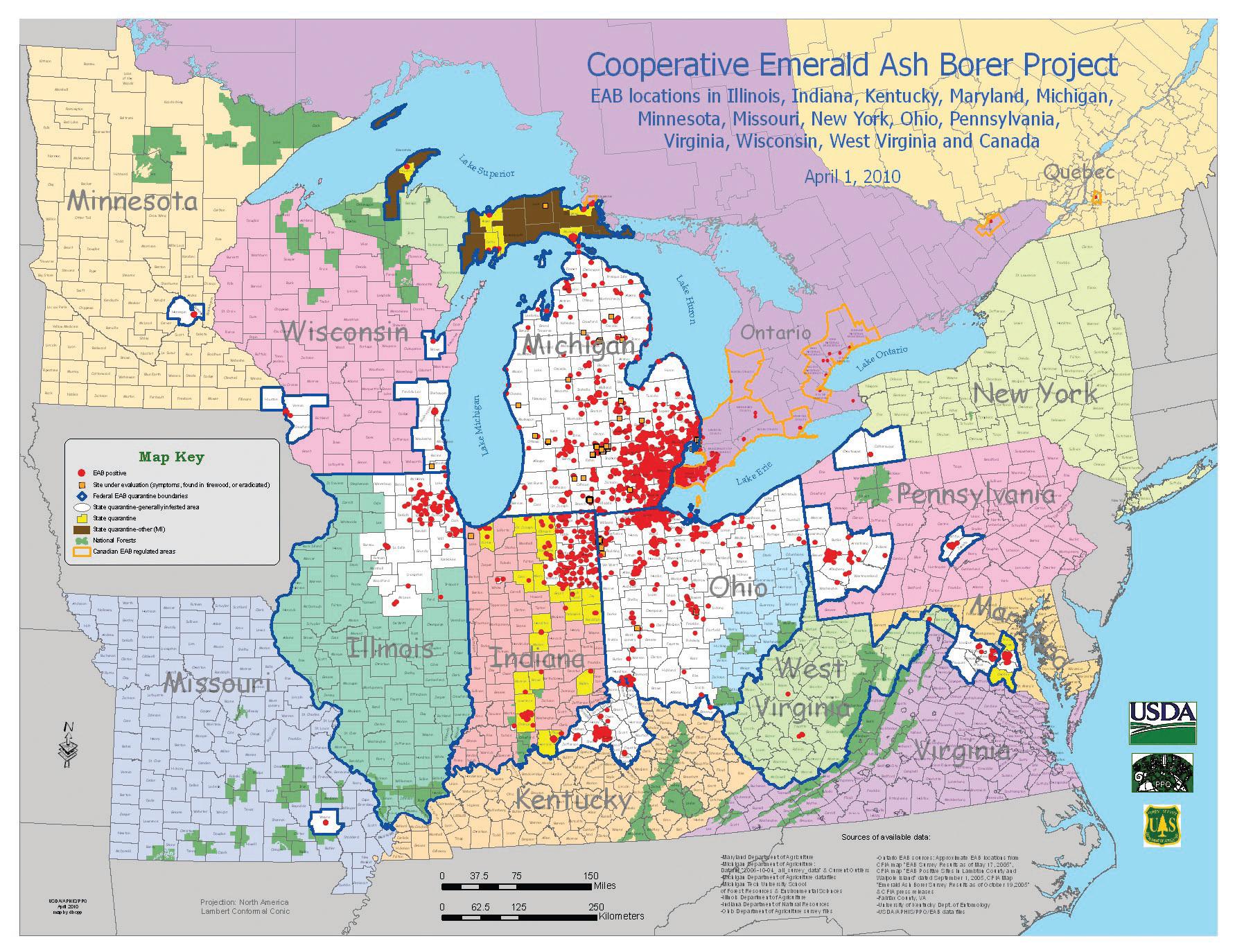
Habitat
Agrillus planipennis is believed to have been introduced to the United States in the late 1990’s via wood shipping containers carrying imports from Asia. Since its initial discovery in Michigan in the summer of 2002, reports of the beetle have been made throughout areas of the Midwest, Canada, and as far as the states of New York and Virginia. However the highest concentrations of infestation have been recorded in southeastern Michigan and the conjoining land in Canada, Ohio and Indiana. As stated, Agrillus planipennis is native to Asia, particularly in areas of the northeast including China, Russia, Korea and Japan.
The dispersal of A. planipennis can be contributed to both their ability to fly and secondary agents, specifically the relocation of infected ash trees. It has been reported that mated females can travel the furthest distances compared to their male and unmated female counterparts. On average, mated females can travel 3 km per day with some traveling up to 20 km per day. That being said, travel occurs when necessary. If the environment is suitable for sustaining life and reproducing, the probability of travel and relocation is very unlikely.
Since the propagation of Emerald Ash Borer is contingent on Ash trees, it is plausible to say wherever there are ash trees there could be Emerald Ash Borer. Noticeable preference has been observed among ash species (Green>Black>White> Blue) however, unless all species are equally present, the beetle will make no additional effort in selection. Observations have been made that the beetle may survive longer under conditions of higher humidity. It should also be noted that under restricting conditions, females may resort to alternative species (elm, walnut, hickory) but larval development seems to be impaired in such instances.

